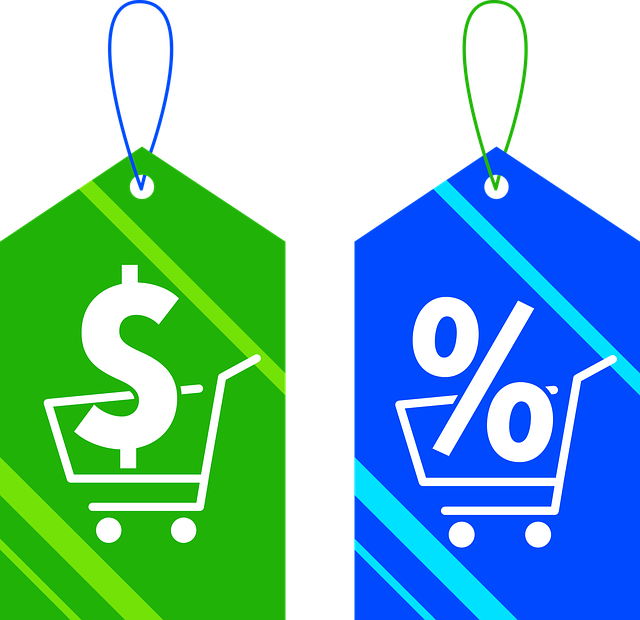The Complete Guide to Amazon Pricing: Cracking the Code to Price Like a Pro
Ever felt like setting prices on Amazon is like solving a Rubik's Cube blindfolded? You're not alone! But don't worry – we're here to help you unlock the secrets of Amazon's pricing maze.
Picture Amazon as a bustling digital bazaar. Millions of shoppers browse countless stalls, comparing prices with a few taps. As a seller, your challenge is to catch their eye and win their business. How? By mastering the art of pricing.
But here's the twist: it's not just about being the cheapest. Amazon's clever algorithms juggle various factors to decide which products get the spotlight. And the holy grail? The coveted Buy Box – that little "Add to Cart" button that can skyrocket your sales.
So, what's the recipe for pricing success on Amazon? It's a delicate balance of:
-
Understanding your competition
-
Decoding Amazon's pricing algorithms
-
Cracking the Buy Box code
-
Keeping your prices both attractive and profitable
Ready to dive in? This guide will walk you through each step, helping you craft a pricing strategy that'll make your products shine in Amazon's vast marketplace. Get ready to boost your sales and watch your profits soar!
Your Path to Pricing Perfection
Before you slap a price tag on your Amazon product, it's time to put on your detective hat and do some serious sleuthing. Why? Because understanding your market is the secret sauce to pricing success!
Who's Who in the Amazon Zoo?
First things first: identify your competition. These are the other sellers vying for your customers' attention. Take a stroll through Amazon's virtual aisles and spot the top dogs in your category. But don't just eyeball their prices – dig deeper! Are they offering mouth-watering deals? Bundling products? Providing five-star customer service? These details can help you position your product like a pro.
Your Trusty Sidekicks: Research Tools
Good news! You don't have to go solo on this mission. There's a whole arsenal of tools ready to supercharge your research:
-
Keepa: Your time-traveling price tracker. See how prices have danced up and down over time.
-
CamelCamelCamel: Another price history whiz that'll alert you when competitors drop their prices.
-
Jungle Scout: Your crystal ball for product demand and sales estimates.
-
Helium 10: A Swiss Army knife of seller tools to help you make data-driven decisions.
What Makes Your Product a Superstar?
Now, let's talk about your product's superpower – its value proposition. What makes it shine brighter than the rest? Is it top-notch quality? Mind-blowing features? Customer service that'll make buyers swoon?
Once you've nailed your product's unique charm, it's time to find its rightful place in the Amazon universe. Are you the budget-friendly hero or the luxury VIP experience? Your price should tell this story loud and clear.
Remember, pricing isn't just about numbers – it's about perception. Price too low, and shoppers might think your amazing product is cheap. Price too high without the wow factor to back it up, and you might scare them away.
By combining your competitor intel, research tools, and a clear picture of your product's star quality, you'll crack the code to perfect pricing.
The Price is Right: Crafting Your Perfect Amazon Price Tag

You've done your detective work, and now it's time for the main event: setting your product's price! This isn't just about picking a number out of thin air – it's about finding that sweet spot that attracts customers and keeps your piggy bank happy. Let's dive into some Amazon pricing strategy scenarios that'll make you feel like a game show host!
Three Flavors of Pricing: Pick Your Favorite!
-
Cost-Plus Pricing: The "Better Safe Than Sorry" Approach
-
Think of this as your pricing safety net. It's simple:
-
Add up all your costs (making the product, shipping it, etc.)
-
Sprinkle on your desired profit (let's say 20%)
-
Voila! You've got your price. For example: If your gadget costs $20 to make, selling it for $24 gives you that 20% profit cushion.
-
-
-
Value-Based Pricing: The "My Product is a Rockstar" Method
-
This one's all about shouting your product's awesomeness from the rooftops:
-
First, identify what makes your product special (Is it indestructible? Does it do your taxes?)
-
Figure out how much customers would pay for these superpowers
-
Price it to match its VIP status. If your widget has features that make competitors' jaws drop, you might be able to command a higher price.
-
-
-
Competitive Pricing: The "Keeping Up with the Joneses" Strategy
-
Here, you're playing the price comparison game:
-
Spy on your competitors' prices (ethically, of course!)
-
Decide if you want to be the budget option, the luxury choice, or somewhere in between
-
Set your price accordingly. Remember, being the cheapest isn't always best. Sometimes, a slightly higher price can make you look like the premium choice!
-
-
Crunching the Numbers: Costs, Profits, and Amazon Fees (Oh My!)

Before you finalize that price tag, let's talk math (don't worry, it's the fun kind):
-
Total up ALL your costs. Don't forget the little things!
-
Decide on your profit goals. How much do you want to make per sale?
-
Use this magic formula: Selling Price = Total Cost + (Total Cost × Desired Profit Margin)
But wait, there's more! Don't forget about Amazon's slice of the pie. They charge fees for:
-
Referrals (varies by category)
-
Fulfillment (if you're using FBA)
-
Storage (for keeping your stuff in their warehouses)
Pro tip: Use Amazon's fee calculators to avoid any nasty surprises.
Remember, the perfect price is like Goldilocks' porridge – not too high, not too low, but just right. It should make customers happy to buy and keep your business thriving.
Dance with the Market: Mastering Dynamic Pricing on Amazon
Imagine if your price tags could do the cha-cha. That's essentially what dynamic pricing is all about! In the fast-paced Amazon marketplace, where prices shimmy and shake faster than you can say "bargain," keeping your prices on their toes is crucial. Let's dive into the world of dynamic pricing and learn how to keep your products dancing to the beat of success!
Why Your Prices Need to Boogie
In the Amazon disco, prices are always moving. Here's why you should join the dance:
-
Stay in the spotlight: Adjust your prices to outshine the competition
-
Maximize your moolah: Raise prices when demand is hot, hot, hot!
-
Win the Buy Box bash: Get that coveted "Add to Cart" button more often
-
Ride the trend wave: Quickly adapt to market mood swings
Your Dynamic Pricing DJ Booth
Ready to spin some price-changing tunes? Here are the tools to get you started:
-
Amazon's Automated Pricing Tool: Your in-house DJ • Set price floors and ceilings to avoid any financial face-plants • Let prices groove based on competitor moves or special events • Keep your hand on the volume knob for ultimate control
-
Third-Party Repricing Superstars: • RepricerExpress: Your personal price-watching robot • Seller Snap: The AI brainiac that makes pricing decisions for you
Crafting Your Price-Changing Choreography
Now, let's create some smooth moves for your pricing strategy:
-
Define your dance style: What's your goal? Winning the Buy Box tango or the profit maximization waltz?
-
Set your dance floor boundaries: Decide on your lowest and highest prices. No limbo-ing below profitability!
-
Create your dance steps:
-
"If competitor goes low, I go a tiny bit lower"
-
"When demand heats up, I'll raise my prices and make it rain!"
-
"I'll match the lowest price within my comfort zone to stay in the game"
-
-
Watch and learn: Keep an eye on how your new moves affect sales, profits, and Buy Box wins. Adjust your routine as needed.
-
Use those fancy features: Let AI and competitor tracking add some extra pizzazz to your pricing performance.
With dynamic pricing, your products can sashay through market changes, cha-cha past competitors, and waltz straight into customers' carts. It's time to hit the dance floor and show Amazon what you've got!
Price Watch: Keeping Your Finger on the Pulse of Amazon

The Amazon marketplace is like a bustling stock exchange, with prices bouncing up and down faster than a kangaroo on a trampoline. Competitors adjust their prices, market demand fluctuates, and Amazon’s algorithms evolve. Consistent price monitoring helps you:
-
Stay Competitive: Keep up with competitors' price changes and maintain your market position.
-
Maximize Profits: Identify opportunities to increase prices during high demand periods or reduce prices to clear out inventory.
-
Enhance Sales Volume: Adjust prices to boost sales and improve your ranking in search results.
Becoming a Data Detective: Using Analytics to Price Like a Pro
Data and analytics play a crucial role in making informed pricing decisions. By leveraging these tools, you can gain valuable insights into market trends, competitor behavior, and customer preferences. Here’s how to use data and analytics effectively:
-
Price Tracking Tools: Use tools like Keepa and CamelCamelCamel to monitor historical price trends and competitor prices. These tools provide visual charts and data that help you understand pricing fluctuations over time.
-
Sales Performance Data: Analyze your sales data to identify patterns and trends. Look for correlations between price changes and sales volumes. This helps you determine the optimal price points for maximizing sales.
-
Competitor Analysis: Regularly review your competitors’ pricing strategies. Identify their pricing patterns, promotional activities, and how they respond to market changes. This information can inform your own pricing adjustments.
-
Customer Feedback: Pay attention to customer reviews and feedback. Understanding customer perceptions of value and pricing can help you fine-tune your pricing strategy to meet their expectations.
When to Hit the Reprice Button
Keep an eye out for these pricing plot twists:
-
Competitor price changes: Did your rival just drop their prices? Time to make a move!
-
Inventory levels: Overflowing warehouse? Maybe it's time for a sale. Running low? You might be able to raise prices.
-
Sales rollercoaster: If sales are plummeting, your price might need adjusting. If they're skyrocketing, can you squeeze out more profit?
Remember, your pricing strategy should be flexible. By keeping a watchful eye on the market and using data to guide your decisions, you'll be able to bend and stretch your prices to fit any situation.
Mastering the Art of Amazon Repricing
Ready to play the Amazon pricing game? Let's dive into the world of repricing strategies that'll have you winning like a game show champion!
Manual vs. Automated: Pros and Cons
Pros:
-
Control: Allows for precise control over pricing decisions based on detailed analysis.
-
Flexibility: Enables customized pricing strategies tailored to specific market conditions.
-
No Additional Cost: No need to invest in repricing software or tools.
Cons:
-
Time-Consuming: Requires significant time and effort to monitor and adjust prices regularly.
-
Prone to Human Error: Increases the risk of mistakes due to manual calculations and adjustments.
-
Reactive Approach: Often slower to respond to market changes compared to automated systems.
Automated Repricing
Pros:
-
Efficiency: Automatically adjusts prices based on predefined rules, saving time and effort.
-
Real-Time Adjustments: Quickly responds to market changes, keeping prices competitive.
-
Scalability: Easily manages pricing for large inventories with minimal manual intervention.
Cons:
-
Initial Setup: Requires time to set up rules and parameters correctly.
-
Cost: May involve subscription fees for third-party repricing tools.
-
Less Control: Relies on algorithms, which may not always align perfectly with strategic goals.
Remember, repricing isn't just about numbers – it's about strategy, timing, and a dash of pizzazz. Whether you're manually adjusting prices like a maestro or letting algorithms do the cha-cha, the key is to stay flexible, keep learning, and always keep your eye on the prize.
Price Elasticity: The Rubber Band Theory of Amazon Pricing

Ever wondered why some products fly off the shelves when you drop the price, while others barely budge? Welcome to the wacky world of price elasticity! Let's stretch our minds and learn how to use this concept to boost your Amazon sales.
What's the Deal with Price Elasticity?
Think of price elasticity like a rubber band. Some products are super stretchy – a tiny price change, and boom! Sales go crazy. Others are as stiff as a board – you can change the price all day, and customers just shrug. Here's the lowdown:
-
Elastic Products: The drama queens of pricing. Drop the price a smidge, and watch sales soar!
-
Inelastic Products: The stubborn mules. Raise the price, lower it – meh, sales barely notice.
Knowing which category your product falls into is like having a crystal ball for your pricing strategy. It's the difference between making it rain or watching tumbleweeds roll by.
Testing the Stretch: How to Measure Price Elasticity
-
The A/B Testing Tango
-
Split your audience like you're dealing cards
-
Show different prices to different groups
-
Watch the sales roll in and see which price is the crowd-pleaser
-
-
The Time Machine Method
-
Change your prices and grab your DeLorean
-
Jump back and forth in time (okay, just look at past sales data)
-
Compare sales before and after price changes like a pricing detective
-
-
The Dynamic Pricing Dance
-
Keep your finger on the pulse of demand and competition
-
Use fancy tools to quickly track market changes
-
Set up rules to auto-adjust prices
-
Pro Pricing Tips
-
Elastic products: Don't be scared to slash prices – the sales surge might make up for it
-
Inelastic products: You've got wiggle room to raise prices without scaring off customers
-
Always be testing: The market changes faster than fashion trends, so keep experimenting
Remember, understanding price elasticity is like having a superpower in the Amazon jungle. Use it wisely, and you'll be swinging from vine to vine, leaving your competitors in the dust!
Staying Competitive Without Slashing Prices: Smart Amazon Pricing Strategies

Want to keep your prices competitive on Amazon without racing to the bottom? You're in the right place! Let's explore some clever moves that'll keep you in the game without emptying your wallet.
Strategy #1: The Bundle Bonanza
Why sell one thing when you can sell two...or three? Bundling products is an effective way to add value for customers and differentiate your offerings from competitors. By combining related products into a single package, you can provide a more compelling value proposition that justifies a higher price. For example, if you sell a coffee grinder, consider bundling it with a premium coffee beans sample or a cleaning brush. Bundled products:
-
Enhance Perceived Value: Customers often perceive bundles as offering better value for money, which can justify a higher price.
-
Increase Average Order Value: Bundling encourages customers to spend more by purchasing multiple items together.
-
Reduce Competition: Unique bundles are harder for competitors to replicate, reducing direct price competition.
Strategy #2: The Listing Makeover
A well-optimized product listing can make a significant difference in attracting customers and justifying a higher price. Focus on the following elements to enhance your listings:
-
High-Quality Images: Use clear, high-resolution images that showcase your product from multiple angles. Include lifestyle images that demonstrate the product in use.
-
Compelling Descriptions: Write detailed, engaging product descriptions that highlight key features, benefits, and unique selling points. Use bullet points for easy readability.
-
SEO Optimization: Incorporate relevant keywords in your title, bullet points, and description to improve your product’s visibility in Amazon search results.
-
Enhanced Brand Content: Utilize Amazon’s Enhanced Brand Content (EBC) or A+ Content to create visually appealing product descriptions with additional images, videos, and comparison charts.
Strategy #3: The Customer Service Superstar
Exceptional customer service can set your brand apart and justify premium pricing. Focus on the following aspects to enhance customer satisfaction:
-
Responsive Communication: Respond promptly to customer inquiries and address any issues or concerns they may have.
-
Reliable Fulfillment: Ensure timely and accurate order fulfillment. Consider using Amazon FBA to leverage their logistics network for fast and reliable shipping.
-
Customer Feedback: Encourage customers to leave reviews and ratings. Positive reviews build trust and credibility, which can justify higher prices.
A Word on Promotions and Discounts
Promotions and discounts can play a strategic role in maintaining price competitiveness while driving sales and customer loyalty. Use these tricks to keep customers coming back for more:
-
Limited-Time Offers: Create a sense of urgency with limited-time discounts or flash sales. This can spur immediate purchases without permanently lowering your prices.
-
Coupons and Deals: Offer coupons or special deals to attract price-sensitive customers. These can be promoted through Amazon’s platform or external marketing channels.
-
Seasonal Promotions: Align your promotions with holidays, seasons, or special events to boost sales during peak shopping periods.
-
Loyalty Programs: Implement loyalty programs or repeat purchase incentives to reward and retain loyal customers. This can include discounts on future purchases or exclusive offers.
Remember, the goal isn't to be the cheapest on the block. It's about creating so much value that customers can't resist hitting that "Buy Now" button. With these strategies in your toolkit, you'll be outpacing the competition faster than you can say "free two-day shipping"!
Avoiding Common Pricing Mistakes

Pricing your product correctly on Amazon is a nuanced process that requires careful consideration and strategic planning. In this section, we'll discuss the key pricing mistakes to avoid, the importance of not undervaluing your product, and the need for consistency in pricing across different platforms.
Pitfalls to Avoid When Setting and Adjusting Prices
1. Ignoring Market Research
One of the most significant mistakes sellers make is neglecting thorough market research. Without understanding your competitors and market conditions, you risk setting prices that are too high or too low. Always conduct detailed research to inform your pricing strategy.
2. Over-Reliance on Discounts
While discounts and promotions can boost sales, relying too heavily on them can erode your profit margins and devalue your product. Use discounts strategically and sparingly to avoid creating a perception of lower quality.
3. Inflexible Pricing Strategies
Sticking rigidly to a single pricing strategy without considering market dynamics can be detrimental. Be flexible and willing to adjust your prices based on competitor actions, market demand, and sales performance.
4. Failing to Account for Amazon Fees
Amazon charges various fees that can significantly impact your profit margins if not factored into your pricing. Always include referral fees, fulfillment fees, and any other costs associated with selling on Amazon when setting your prices.
5. Setting Prices Solely Based on Costs
While covering your costs is crucial, setting prices solely based on cost-plus pricing without considering market value or competitor prices can limit your sales potential. Balance cost considerations with market-driven pricing strategies.
Conclusion
Pricing your products effectively on Amazon is a complex challenge that requires a strategic approach. Understanding Amazon's pricing landscape is crucial for success. Conducting thorough market research helps inform your pricing decisions, while various pricing strategies—such as cost-plus, value-based, and competitive pricing—provide different pathways to set your initial price. Dynamic pricing allows for real-time adjustments based on market conditions, and understanding price elasticity helps you see how changes in price impact sales volume. Staying competitive doesn't always mean having the lowest price; instead, focus on adding value through strategies like bundling products and enhancing your product listings.
Avoiding common pricing mistakes is essential for long-term success. Instead, use data-driven insights to inform your pricing decisions and regularly monitor competitor prices and market trends. Implement a dynamic pricing strategy to stay competitive, and consider bundling products to increase perceived value. Optimize your product listings to justify higher prices, and provide excellent customer service to support premium pricing. Use promotions and discounts strategically, and ensure pricing consistency across all sales channels.
Developing an effective pricing strategy for Amazon is an ongoing process that requires constant attention and adaptation. As the market evolves, so should your approach to pricing. Regularly review and adjust your strategies based on performance data, competitor actions, and changes in customer behavior.
While mastering pricing is crucial, it's just one piece of the Amazon success puzzle. If you're looking to take your Amazon business to the next level, consider turning your listing optimization over to the experts at Marketing by Emma. We specialize in creating compelling product listings that can help justify higher prices and increase conversions. By partnering with us, you can focus on perfecting your pricing strategy while we ensure your listings shine in the competitive Amazon marketplace. Let's work together to maximize your Amazon success!
Leave a comment
Please note, comments must be approved before they are published